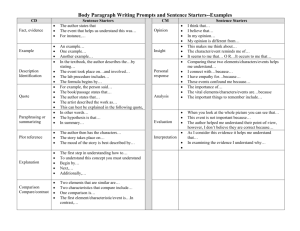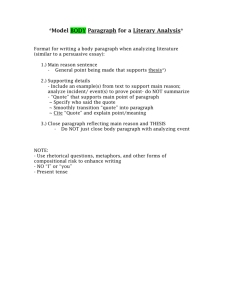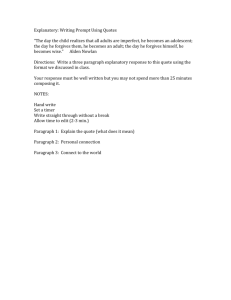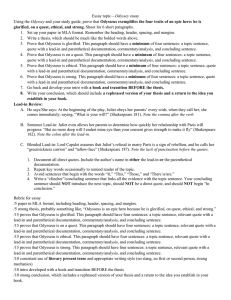Body Paragraph Writing Tips
advertisement
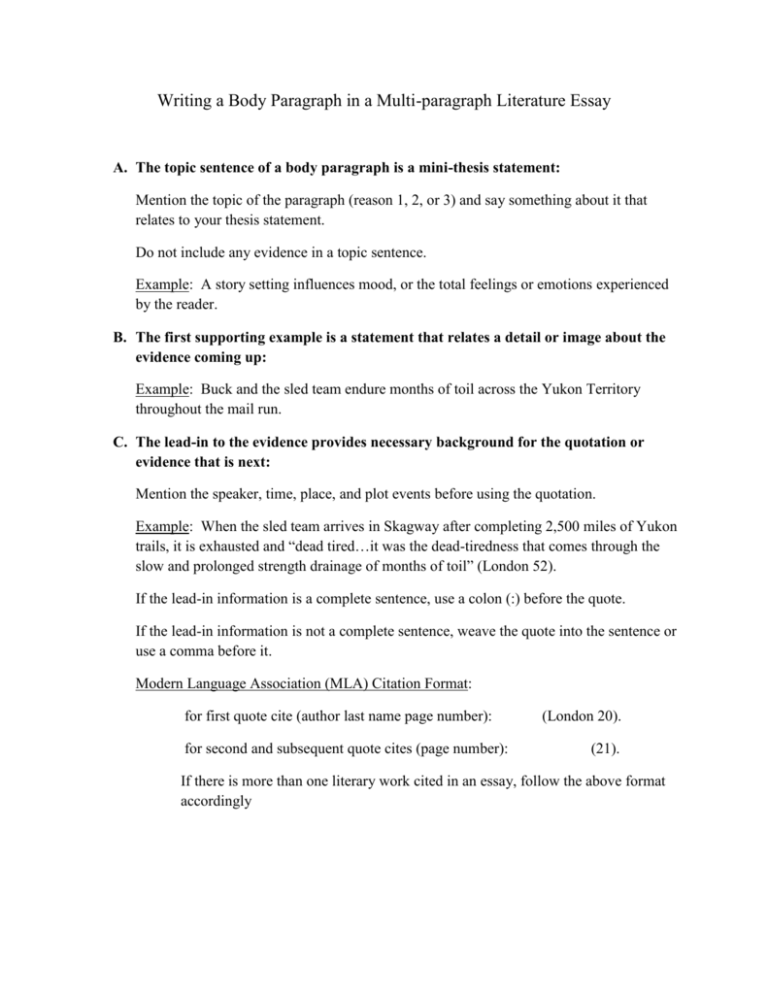
Writing a Body Paragraph in a Multi-paragraph Literature Essay A. The topic sentence of a body paragraph is a mini-thesis statement: Mention the topic of the paragraph (reason 1, 2, or 3) and say something about it that relates to your thesis statement. Do not include any evidence in a topic sentence. Example: A story setting influences mood, or the total feelings or emotions experienced by the reader. B. The first supporting example is a statement that relates a detail or image about the evidence coming up: Example: Buck and the sled team endure months of toil across the Yukon Territory throughout the mail run. C. The lead-in to the evidence provides necessary background for the quotation or evidence that is next: Mention the speaker, time, place, and plot events before using the quotation. Example: When the sled team arrives in Skagway after completing 2,500 miles of Yukon trails, it is exhausted and “dead tired…it was the dead-tiredness that comes through the slow and prolonged strength drainage of months of toil” (London 52). If the lead-in information is a complete sentence, use a colon (:) before the quote. If the lead-in information is not a complete sentence, weave the quote into the sentence or use a comma before it. Modern Language Association (MLA) Citation Format: for first quote cite (author last name page number): for second and subsequent quote cites (page number): (London 20). (21). If there is more than one literary work cited in an essay, follow the above format accordingly D. The analysis or interpretation statement explains how the evidence or quotation relates to the thesis statement: Start with wording that expresses the quote as a noun, then use a strong verb, and connect to the thesis statement. Example: The sled team’s exhaustion provokes feelings of hopelessness and gloom in the reader because of the dogs’ terrible physical and mental state. (other strong verbs: ignite, inspire, provoke, reveal, force, illustrate, explain, evoke, illuminate, highlight, emphasize, provoke, reflect, portray, demonstrate, exhibit, display) E. The second supporting example in any body paragraph should begin with a transition word or phrase (see list attached). F. The concluding/transition sentence of a body paragraph is a restatement of the topic sentence and a bridge to the next body paragraph topic (reason 2 or 3). Example: A vivid story setting creates strong emotions that enable readers to connect with characters as they progress and change throughout a literary work. (clue: “characters”) It is not necessary to include a transition statement at the conclusion of the third body paragraph.

